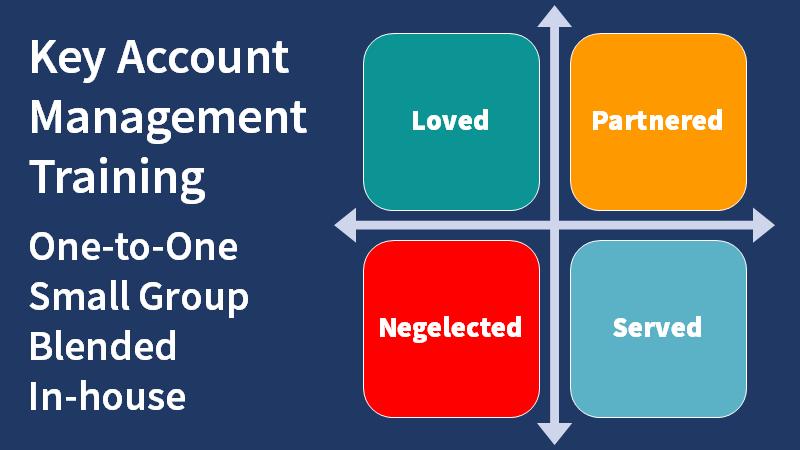Persuasion techniques, tactics, and skills for improving business communication skills, team collaboration, and business influence.

Do you need to improve business communication skills? Take a shortcut. Schedule a call and tell me what you are looking for. I'll share what I know. Reach out today for a communication skills training course special offer.
Increase credibility, authority, and influence through business communication skills training.
What is the best way to learn business communication skills?
- Study best practices and ask professional communicators.
- Take a course that uses the upside-down training principle by providing advanced access to the course content.
- Participate in training that focuses on exercises, planning, practise, and change management.
- Develop actions and reminders for embedding leaning in habits and practices.
- Plan workplace actions for embedding learning in routines and habits.
- Arrange one-to-one learning.
Have people listen to what you say and act on what they hear. Develop advanced business communication skills to increase teamwork, strengthen influence, and persuade people to change their minds.
Participants take on workplace assignments in one-to-one or group sessions. Then reconvene to review results, adjust their approach, and take on their next assignment.
Communication skills training can be spread over several months or condensed into longer intensive sessions.
Course Content
Introduction: Goals, objectives, and learning management
Unspoken Influence: Rapport, mind reading and thought projection
Passive Persuasion: Adding value to another person’s thinking
Persuasive Listening: How to influence through listening
Accounting for Differences: Adapting for personality style
Secrets of Persuasion: Understand human decision shortcuts
Gaining Commitment: Asking for agreement and handling objections
Negotiations: How to protect both your and the other person's win
Reputation: Managing impressions and perceptions
Review and Next Steps: How to transform learning into results
Key Takeaways
- Increase personal impact.
- Have others place more value on your opinion.
- Enhance confidence and charisma.
- Become more persuasive.
- Establish trust faster.
- Increase cooperation between others.
- Boost influence.
Participant Comments
Excellent course. Felt relaxed and comfortable with the whole experience. Feel that I can go out and be more confident in what I do. Blatchfords
I found the course very informative and helpful and will hopefully be able to approach prospective customers in a more confident manner and therefore try and speak to the decision maker to make an appointment rather than just trying to obtain their names and send them marketing literature. Inter-tel
I enjoyed this training very much. Not only did it provide me with practical tools to improve my working behaviour/ team and management skills but it gave me the opportunity to step back and refocus on my priorities in an enjoyable way. Dassault
Materials and Resources
- Self-study guide.
- Accelerated learning guide.
- Communication skills training slide-decks.
- Persuasion quotient assessment.
- First impressions survey.
- Likeability index.
- Thinking style assessment.
- Sensory language exercise.
- Reasons for asking questions.
- Persuasive questions guide.
- Questions to stimulate dialogue.
- Reading people's thoughts - guide.
- Personality style assessment.
Communication Skills Training Course Delivery Options
One-to-One
Take the course through ten 1-hour or five 2-hour one-to-one sessions with the course author.
£995 - Learn more.
One to One on a per-session basis:
£150 per 1-hour session - Learn more.
Virtual Classroom Group Training
Ten 1-hour or five 2-hour virtual classroom sessions.
£3395 for up to fifteen people - Learn more.
Have key elements of the content presented session by session. Schedule each session to suit participant needs.
£450 per 1-hour session for up to fifteen people. Learn more.
Fees exclude applicable VAT.
Traditional Classroom
Delivery over one or more days at a conference venue or the customer's offices. Contact us for fees.
What are the best practices for persuasive communication?
Persuasive communication is an essential skill for influencing opinions, motivating action, and fostering engagement. Here are some best practices for persuasive communication:
1. Know Your Audience
Research Thoroughly: Understand the demographics, preferences, values, and concerns of your audience. Tailor your message to resonate with their interests and priorities.
Empathy and Connection: Put yourself in your audience’s shoes to connect with them emotionally and address their specific needs.
2. Structure Your Message Clearly
Strong Opening: Capture attention from the beginning with an engaging introduction that outlines what is at stake.
Logical Flow: Organise your message in a clear, logical sequence to make it easy to follow. Use a structure such as problem-solution or chronological order.
Compelling Conclusion: End with a powerful summary and a clear call to action, ensuring your audience knows the next steps.
3. Use Credible Evidence
Facts and Data: Support your points with relevant statistics, studies, or research to build credibility.
Testimonials and Examples: Include real-life stories or endorsements to make your arguments more relatable and convincing.
Expert Opinions: Referencing experts or authorities in the field strengthens your message.
4. Appeal to Emotions
Emotive Language: Use language that evokes emotions, whether it is excitement, concern, hope, or empathy, to create a personal connection.
Storytelling: Integrate stories to illustrate points vividly and make your message more memorable.
Visual Imagery: Paint a picture with words or use visual aids to enhance emotional engagement.
5. Be Concise and Focused
Avoid Overloading: Present your message clearly without excessive detail or digressions that could dilute its impact.
Highlight Key Points: Emphasise the main arguments and reinforce them throughout your message.
6. Utilise the Power of Repetition
Reiterate Key Messages: Repetition helps solidify your main points in the audience’s mind.
Varied Phrasing: Restate ideas in different ways to maintain interest while reinforcing the message.
7. Use Positive Language
Encouraging Tone: Choose words that inspire and motivate action.
Solution-Oriented Approach: Focus on benefits and opportunities rather than problems or negatives.
8. Maintain a Confident and Authoritative Tone
Strong Voice: Speak or write with certainty, using assertive language that conveys confidence.
Avoid Tentative Phrasing: Steer clear of words like “maybe,” “possibly,” or “I think.” Instead, opt for definitive statements.
9. Engage in Two-Way Interaction
Encourage Questions: Allow space for questions and provide thoughtful answers to build trust and engagement.
Adapt and Respond: Be ready to adjust your approach based on audience feedback or reactions.
10. Use Persuasive Techniques
Reciprocity: Offer something valuable or helpful first, fostering goodwill and a sense of obligation.
Scarcity: Highlight limited availability or time-sensitive offers to create urgency.
Social Proof: Showcase how others have benefited or are involved, making your proposal more appealing.
Authority: Position yourself as knowledgeable by sharing your qualifications or referencing trusted authorities.
11. Body Language and Non-Verbal Cues
Maintain Eye Contact: In face-to-face communication, strong eye contact signals confidence and sincerity.
Gestures and Facial Expressions: Use appropriate gestures and expressions to reinforce your message.
Tone of Voice: Vary your tone to convey enthusiasm, seriousness, or other relevant emotions.
12. Anticipate and Address Objections
Prepare for Counterarguments: Identify potential objections and address them proactively within your message.
Provide Solutions: Demonstrating that you have considered and resolved potential issues strengthens your case.
13. Create a Sense of Urgency
Timeliness: Highlight why immediate action is important or how waiting could lead to missed opportunities.
Limited Offers: Mention deadlines or limited availability when appropriate to motivate quicker responses.
14. Conclude with a Strong Call to Action
Clear Next Steps: Directly tell your audience what you want them to do, whether it’s making a decision, taking a specific action, or changing their viewpoint.
Follow-Up: Offer to follow up or provide additional support as needed to keep the conversation open and engaging.
These practices help ensure your communication is persuasive, impactful, and effective in influencing your audience. Become more persuasive by joining our communication skills training course.
Guarantee
We unconditionally guarantee the quality and effectiveness of our services. In addition, we warrant that applying the principles, methods, and practices presented in our materials will lead to a gain in value equivalent to at least five times the fees. Should you decide that our services have not met this guarantee, we will refund your fees promptly and courteously.
Want Something Different?
Please Ask:
If you are looking for business communication skills training or need to increase business influence or team collaboration, we can help. Telephone +44 (0)1392 851500. Alternatively, use the contact form here or send an email to custserv@salessense.co.uk.












